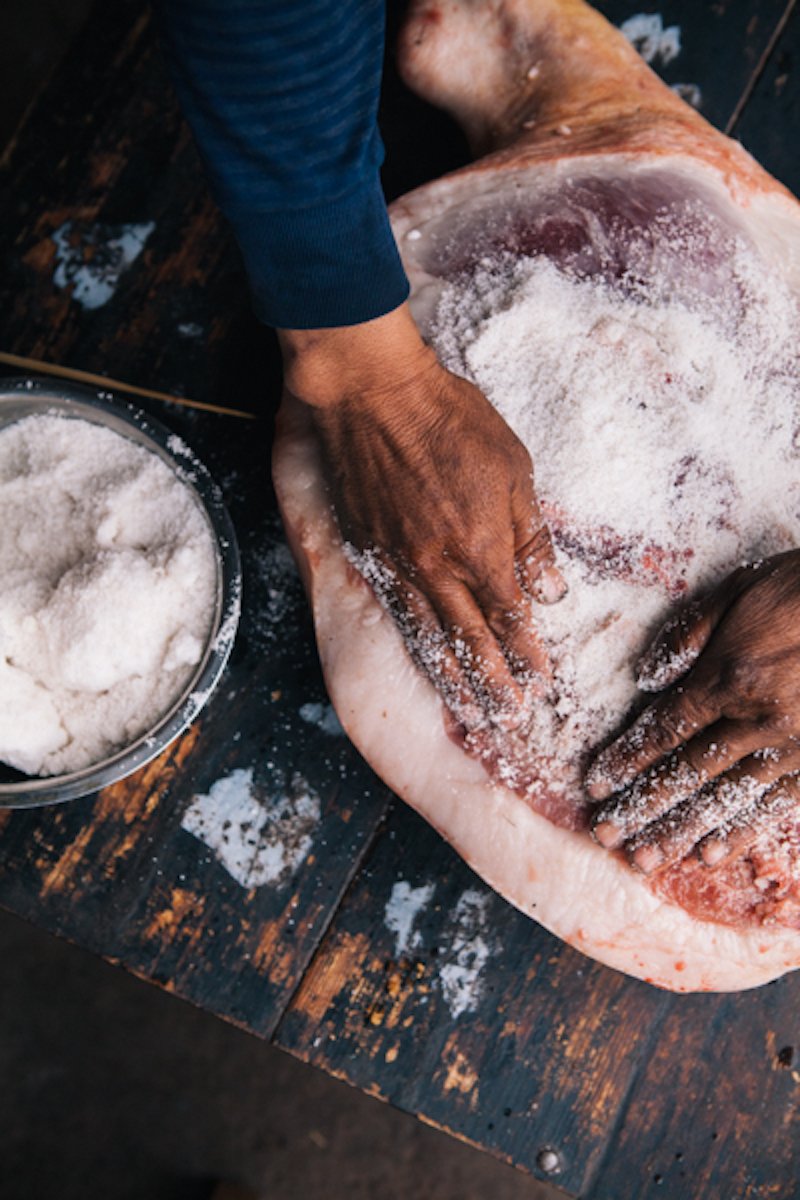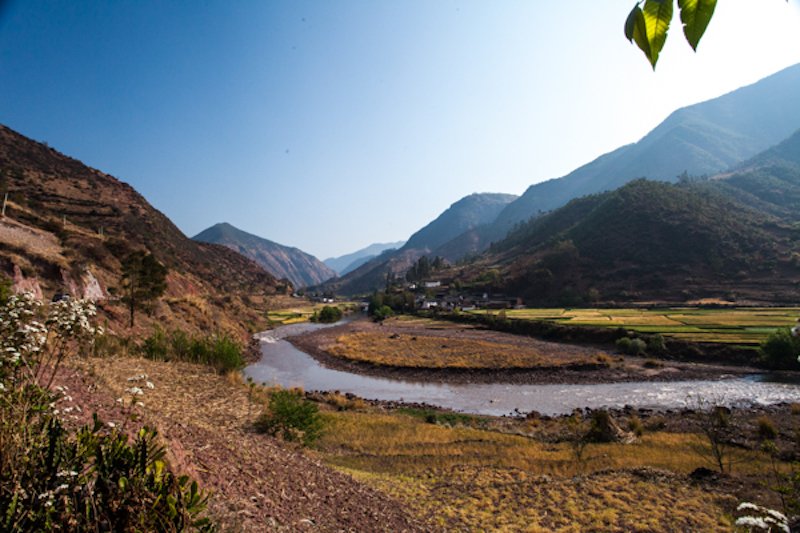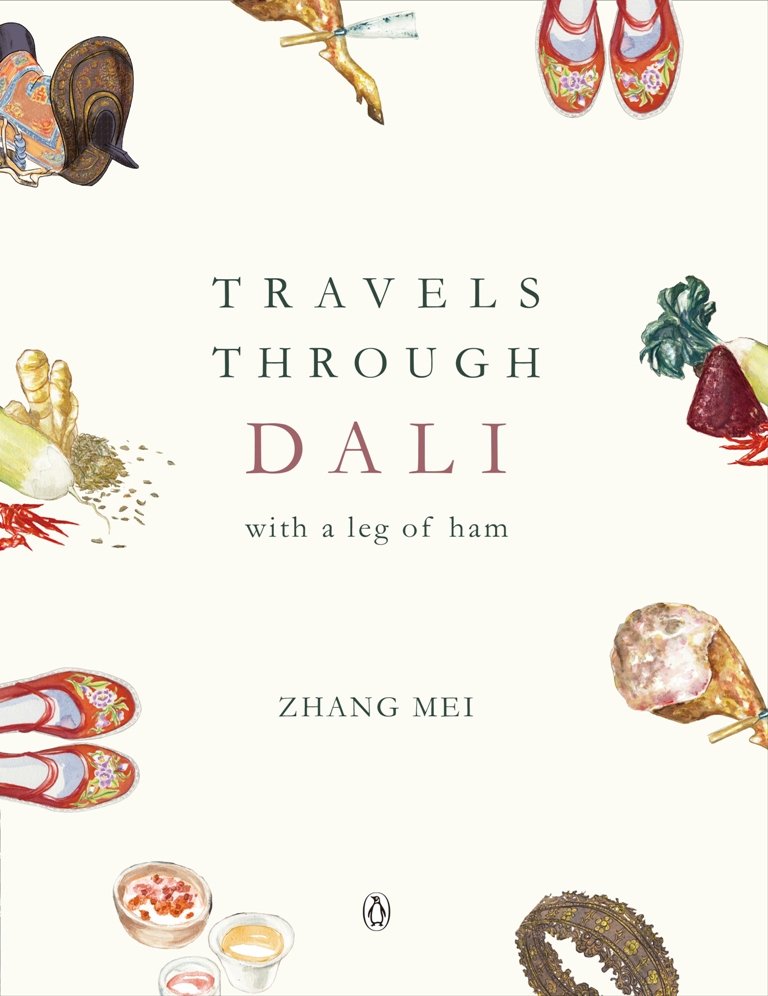Travels Through Dali With a Leg of Ham: WildChina Founder Returns to Her Hometown in This Beautiful New Travelogue
Standing on China’s southernmost borders, Yunnan’s cultural and culinary complexity have fascinated travelers for centuries. Who better to tell the story of this fascinating province than Dali-native and WildChina founder Zhang Mei, who has dedicated years of her life to exploring the region. In her new book Travels Through Dali With a Leg of Ham, Zhang Mei returns to her home town and uses one of the region’s most famous culinary exports, cured ham, as a lens to focus on the local people and their stories.
Accompanied by photographer Elizabeth Phung’s beautiful images, the book is part travelogue, part recipe book. Below, the author tells us why she chose this humble pork product and gives us some tips for the perfect visit to Yunnan.
Firstly, please tell us a little bit about your background.
I was born in Yunnan, a real Yunnan Native. However, as a child, I despised everything “Yunnan”. I hated the perfect weather, and thought it made people lazy. The lifestyle in Yunnan was too slow for me. So I jumped at the chance to apply to Harvard Business School and went there for my MBA in 1994. After I graduated I worked for a consultancy called McKinsey.
It was only in 1999 when I finally made my way back to Yunnan and found the province stunning. It was this experience that prompted me to start WildChina – a company dedicated to providing travelers with a richer experience of China – in 2000. I’ve been running WildChina and building other related businesses since then.
What inspired you to take this journey and why do it with a leg of ham?
The idea for the book originally came up when we were celebrating WildChina’s 15th birthday. I didn’t want to publish a boring corporate book showing the company’s major milestones. I wanted to give back. We are lucky to be able to travel and see beautiful things and people all the time, and I wanted to share that experience with other people.
Ham for me represents a happy home – good food with family and friends. That’s what I think about when I think about Yunnan. For me, Yunnan is more than just one of China’s top tourist destinations;its beauty goes deep, in the age-old traditions, in the hardworking spirit of the locals, in the normal pains and troubles of family life. I chose ham as a way to showcase local life since it is something we do every day – we eat!

On your travels outside of China, have you ever found a ham that can live up to the ham you enjoyed during your childhood?
In a way, ham has illustrated the evolution of my worldviews.
Before leaving, I thought Yunnan was the only place on earth that produced ham. Of course, when I walked into the dining hall of Harvard Business School and encountered a ham and cheese sandwich, I realized that was not the case. But the sandwich tasted so bad that I was convinced Yunnan was the only place on earth that produced tasty ham.
My life took on a different trajectory after I graduated, and the flavor of Yunnan faded in my memory. That is, until one Thanksgiving, when an entire leg of ham turned up in the mail at my house in Maryland, a gift from my American father-in-law. This ham was different. It was smoked and ready to eat, and it tasted really good. What sort of ham was this, I inquired? Virginia ham!
Later, I was introduced to Italian prosciutto, Spanish jamón ibérico – all these different porky delicacies celebrated across the world. The more I traveled, the more similarities presented themselves, even among vastly different cultures. Now I can say from experience, Yunnan ham is on par with the best in the world.
The text of the book is accompanied by some beautiful photos. What do Elizabeth Phung's images add to the journey the book takes?
Interesting question. I recently had a small book launch in Dali. A lot of my Chinese friends came and they told me that they loved Liz’s photos because her photos show Yunnan from a completely fresh perspective, and it happens to be the perspective that I share. For example, she took a photo of a bride with an electricity pole in the background. I like this photo a lot because it places the bride exactly where she was: rural China. Her outfit and the banquet she had tell us a lot about where China is today.
What changes have you seen take place in Dali and the surrounding region since you grew up there?
There are many visible changes. Firstly, apartment buildings and highways now line the Erhai shore. Buildings are much taller, often 20-30 stories high. There are now highways leading north to Lijiang,west to Burma, and east to Kunming.
Secondly, the population mix has changed. There are tens of thousands of Chinese tourists walking through the old town everyday, while in my youth the town was quiet and quaint. There are also a lot of new residents who are opening up coffee shops, restaurants, and lodges around the old town.

As the founder of a travel company, what is your take on the way tourism is changing China? What can cities and towns like Dali do to both encourage tourism and also preserve traditions?
I support the general trends and changes that are taking places in the tourism industry in China. Chinese people are traveling more and their tastes are becoming more sophisticated. The more people travel, the more open-minded people become. I fundamentally believe in the value of travel.
That said, I think the majority of the travel industry are serving “junk food,” by which I mean, the cheap packaged tours that don’t offer the sort of learning or discovery that travel should. Of course, this is an economic issue as well as an education issue. Junk food travel may be cheap, but as the population gets wealthier, there will be a demand for “gourmet travel,” the type of travel that explores the environment and culture of each location.
Cities like Beijing and Dali also need to work on providing more “gourmet travel” products. One of the saddest things about traveling around China is that a lot of cities look more and more alike, because of the universal need to develop shopping malls, high-rise office buildings and residential buildings. But if the cities all look the same, why bother to fly from Beijing to Dali? I believe that city managers and travel service providers need to explore the soul of each place, and how travel experiences can be made to reflect this.
I think the first step for a local government to encourage conservation of tradition is first to realize the value of such traditions.
Do you have any tips for first time travelers to Dali/Yunnan? What are some of your "must sees" or "must dos"?
For their first time in Yunnan, I would suggest travelers take it slow and cover no more than three towns within one week. Dali, Lijiang and Shangri-La are still the must see sites, but I would spend more time in Dali and less time in Lijiang, simply because Lijiang is just too commercial and too touristy.
In Dali, biking around Erhai lake is always beautiful. Aunty Cheng’s home cooking, as featured in my book, is a great experience to really see how Dali local families live. Then a hike up Cangshan mountain is a must.
They should also take the two-hour drive north from Dali to Shaxi. The architecture in Shaxi is particularly beautiful and the village is pretty with lots of hiking opportunities. Also, there is a lady who makes cheese who offers a three-hour experience of cheese making and Bai cooking at her house.
I suggest driving by Lijiang and visiting Tiger Leaping Gorge on the way to Shangri-La. Shangri-La is heaven for those who want to experience Tibetan culture outside of Tibet Autonomous region. Songzanlin monastery is stunning, the Bitahai National Park is great for hiking andif one visits in winter time you can see the Black Necked Cranes in Napahai.
All of the above makes it an activity packed week back to nature and culture in Yunnan.

Travels Through Dali With a Leg of Ham is available for purchase online now from travelsthroughdali.com.
A shorter version of this article first appeared in our November/December magazine. To read the entire issue online, please click here.
More stories by this author here.
Instagram: @gongbaobeijing
Twitter: @gongbaobeijing
Weibo: @宫保北京
Photo courtesy of Zhang Mei







